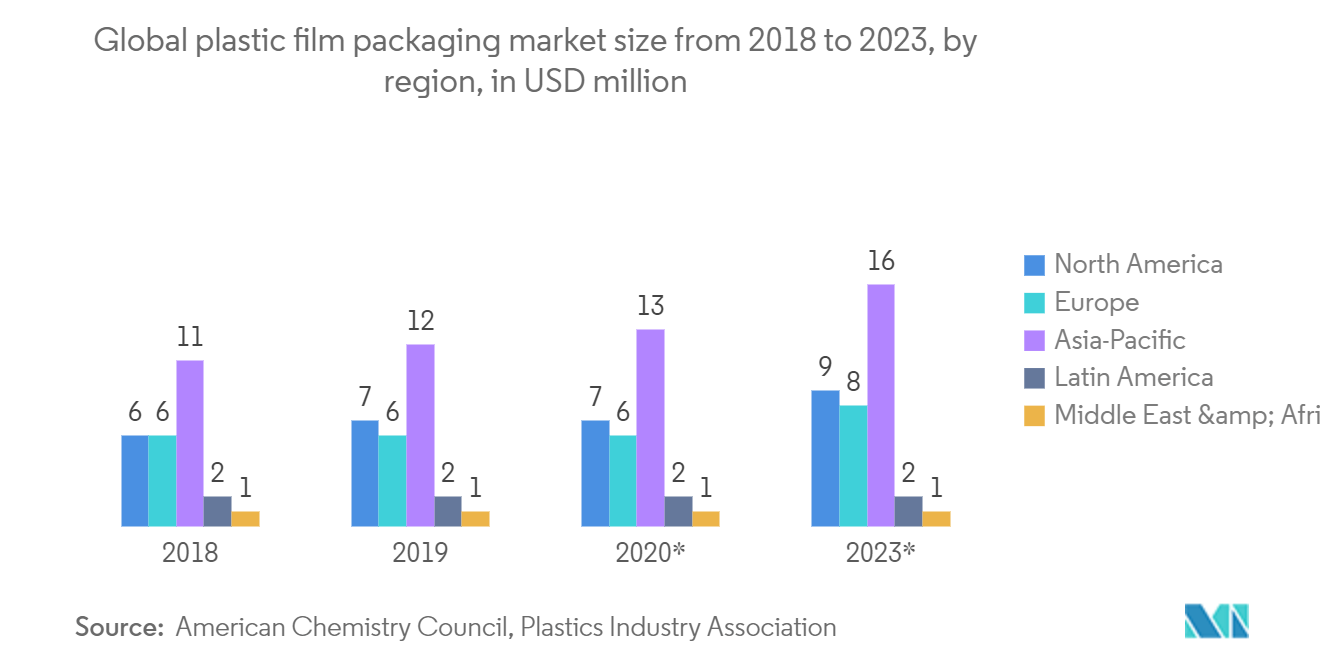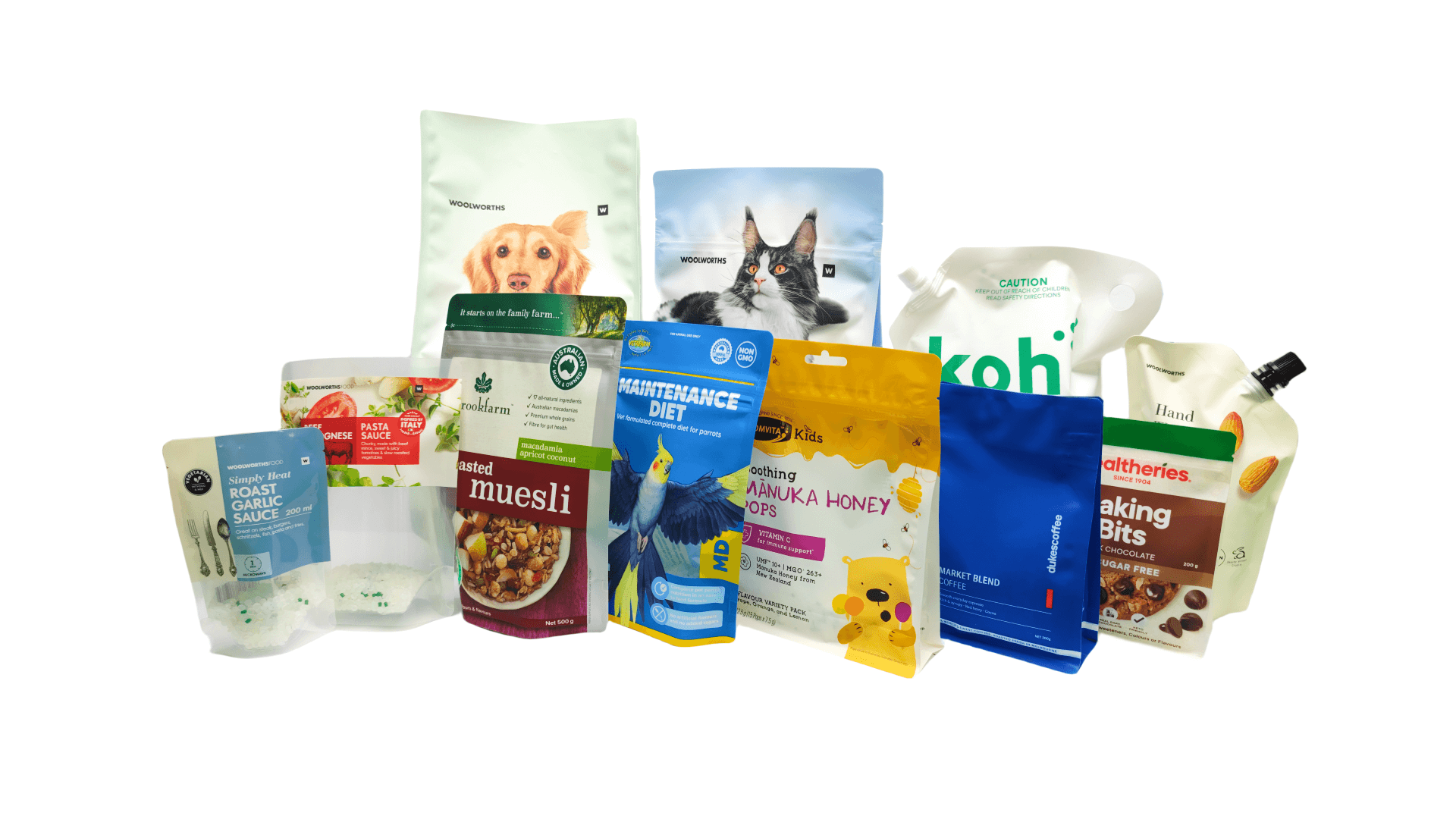Sustainable Packaging Solutions: Everything You Need to Know
What is Sustainable Packaging?
What is sustainable packaging? What are sustainable packaging solutions?
Packaging is crucial in safeguarding the environment, an aspect often overlooked in daily life. The concept of environmental conservation is deeply ingrained in people’s minds, leading more and more brands to embrace sustainable packaging practices. This includes initiatives to minimize material usage, reduce plastic waste, and implement other eco-friendly projects. Enterprises across various industries, such as food, beverage, and cosmetics, are actively pursuing sustainable development, aligning with the growing global emphasis on environmentally responsible practices.
The initial interaction between consumers and products occurs through packaging, which leaves a lasting impression. By adopting sustainable packaging, brands can not only appeal to environmentally conscious consumers but also gain a competitive edge in the market. Implementing eco-friendly packaging solutions not only helps expand the customer base but also showcases a brand’s commitment to sustainability, making a positive impact on both consumers and the environment.
And what is sustainable packaging? Sustainable packaging refers to the use of environmentally friendly materials throughout the entire production and disposal process. It considers not only the energy consumed during material manufacturing but also how the materials are used and disposed of. The key criteria for sustainable packaging include ease of recycling, reusability, and protection during the recycling process. By utilizing sustainable packaging, brands can reduce waste, conserve resources, and minimize their environmental footprint.
8 Criteria of Sustainable Packaging
To evaluate whether packaging is considered sustainable, several factors can be taken into account:
- It is made from materials that are safe and healthy throughout its entire lifecycle, without posing risks to human health or the environment.
- It maximizes the use of renewable or recycled materials, minimizing the depletion of natural resources.
- It is manufactured using clean production technologies and best practices, minimizing pollution and environmental impact.
- It is designed to optimize materials and energy, reducing waste and maximizing efficiency.
- It is sourced, manufactured, transported, and recycled using renewable energy sources.
- It is effectively recovered and utilized in closed-loop cycles through recycling or reuse, minimizing waste, and promoting a circular economy.
- It promotes the well-being of individuals and communities throughout its lifecycle, ensuring safety and health.
- It meets market standards for performance and cost, making it competitive in the market.
These criteria provide a clear framework to evaluate the sustainability of packaging and encourage responsible packaging practices.
The Advantages of Sustainable Packaging
What advantages of sustainable packaging for industries? Sustainable packaging offers several practical benefits to companies:
Environmental Benefits
Sustainable packaging helps protect the environment by using renewable or recycled materials, reducing waste, and minimizing carbon emissions. It contributes to conserving natural resources, reducing pollution, and combating climate change.
The Continued Expansion in the Market
A recent survey by Capgemini on sustainability and shifting consumer behavior found that 79% of consumers are altering their purchasing habits mostly due to considerations of social responsibility, inclusivity, and environmental impact.
Additionally, 53% of consumers and 57% of consumers aged 18 to 24 have moved to less well-known brands because they are more environmentally friendly. A little over 52% of customers claimed to have an emotional bond with companies or organizations they consider to be sustainable.
Source: mordorintelligence
Consumer Appeal
Sustainable packaging resonates with environmentally conscious consumers who prioritize eco-friendly choices. It can attract a growing market segment that values sustainability, leading to increased customer loyalty and preference for brands that prioritize the environment.
CGS surveyed over 1,000 U.S. individuals (ages 18-65+) on how sustainable products and business practices drive their buying preferences. Despite price still being a big factor in purchasing decisions, consumers are emphasizing sustainability, and are also increasingly focused on shopping with brands whose mission they care about.
Key findings from the survey include:
- Buyers want sustainable products, and over one-third will pay 25% more for them
- Brands must revamp their strategies for cultivating customer loyalty
- Younger buyers are more eco-aware
- Sustainable apparel is only starting to become a priority
CGS Survey Reveals ‘Sustainability’ Is Driving Demand and Customer Loyalty.
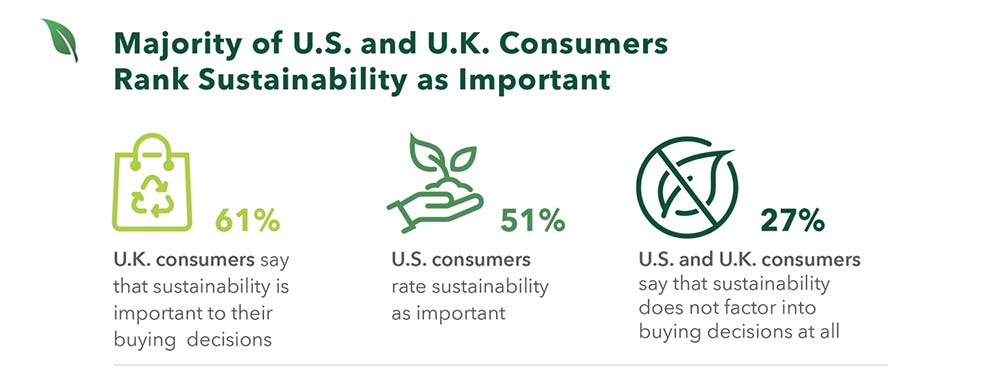
Cost Saving
Adopting sustainable packaging practices can lead to long-term cost savings.
Using recycled materials or optimizing packaging design can reduce material costs, while energy-efficient production processes and streamlined logistics can lower operational expenses.
Regulatory Compliance
Many regions have implemented regulations and policies promoting sustainable packaging practices. At present, regulations concerning the sustainability aspects of packaging are expanding across various fronts, encompassing aspects such as the proportions of recycling or recycled content. This expansion is no longer limited to specific countries or regions, rendering these regulations a global phenomenon, albeit with varying levels of implementation.
By adopting sustainable packaging, businesses can ensure compliance with these regulations, avoiding potential penalties or restrictions.
Why Sustainable Plastic Packaging
A report on BBC said:
The global plastic packaging industry produces over 78 million tonnes annually, with a market value of nearly $198 billion. Only a small portion of this is recycled, while the vast majority is discarded. Plastic waste now permeates every corner of our planet, from remote areas of the Antarctic to the deepest ocean trenches.
Over a third of the food sold in the EU is currently packaged in plastic, and each of its 510 million residents generates approximately 31kg of plastic packaging waste annually. One of the reasons for the dominance of plastic is its efficiency in doing more with less: for instance, it requires less material to produce a plastic drink bottle than a glass one.
“In many cases, plastics are better for the environment than the alternatives,” explains Selke. “It is surprising until you look closely at it,” says Susan Selke, director of the School of Packaging at Michigan State University.
- Low shipping cost
For example: A 330ml plastic soft drink bottle typically contains about 18 grams of material, whereas a glass bottle can weigh between 190g and 250g. Transporting beverages in heavier containers necessitates 40% more energy, resulting in higher carbon dioxide emissions and up to a fivefold increase in transport costs per bottle. One report estimated environmental costs would be five times higher if the soft drinks industry used alternative packaging like glass, tin, or aluminum instead of plastic. - Extend the shelf life of food, reduce waste
For example, the shrink wrap used on cucumbers can extend the vegetable’s shelf life by more than double, enabling it to be stored for up to 15 days in the refrigerator and reducing food waste by half. An unwrapped cucumber would only last two days at room temperature and nine days if refrigerated. Beef is packed in polystyrene foam trays covered with plastic film, it typically remains fresh for three to 7 days. However, if vacuum-packed in multilayer plastic, it can last up to 45 days without spoiling. According to the environmental accounting firm Trucost, vacuum-packing sirloin steak can reduce food waste by almost half compared to conventional plastic packaging. Much of the food we buy from supermarkets comes tightly wrapped in sealed plastic film and trays keep the fruit, and vegetables safe and make them easy to sell. According to anti-waste charity Wrap, extending the shelf life of produce by just one day would save shoppers in the UK up to £500 million ($661m).
In this light, it might not make sense to ban plastics altogether but instead make plastics better.
Sustainable Packaging Solutions
Sustainable packaging solutions focus on reducing waste, using renewable or recyclable materials, optimizing packaging design for efficient transportation and storage, and promoting circularity in packaging materials.
Sustainable packaging also aims to address issues such as carbon emissions, resource depletion, and pollution, contributing to a more sustainable and eco-friendly approach to packaging products.
Sustainable Packaging Industry Segmentation
The global sustainable packaging market is segmented by process, material type, and end users.
| Process |
|
| Material Type |
|
| End User |
|
Why Flexible Plastic Packaging
Flexible plastic packaging is a very resource-efficient packaging format allowing for a reduction in the overall packaging consumption.
- Its lightweight nature reduces transportation costs and emissions
- Flexibility allows it to conform to the shape of the product, minimizing wasted space
- Requires fewer raw materials to produce, making it a more resource-efficient option
Streamlined LCA to produce packaging for 1,188,000 fl. Oz of single-serve juice packs
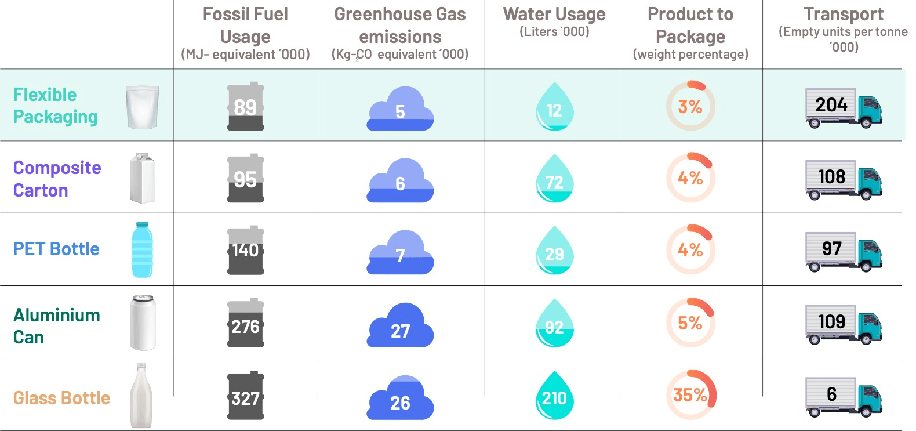
In this exhibit, we can find that flexible packaging has the best LCA (Lifecycle assessments) compared to other alternative materials like cartons, bottles, and cans…
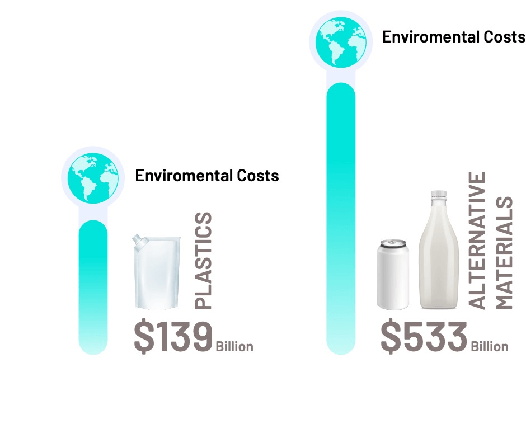
Replacing all the plastic packaging with other alternatives, such as glass or cans, would have around 4 times higher impact on the environment.
Sustainable Packaging Ideas at KDW
A big challenge in today’s industry is that a majority of packaging films are not recyclable due to the different materials used in the structure. We at KDW address this challenge by offering recyclable mono-materials.
KanReTM HBE(High barrier)/HLE (Low barrier)is the Recyclable Packaging made by Kinderway Packaging, it is mono PE material with/without coating to provide good moisture and gas barrier.
- Typical PET/PE structure VS KanRe HLE
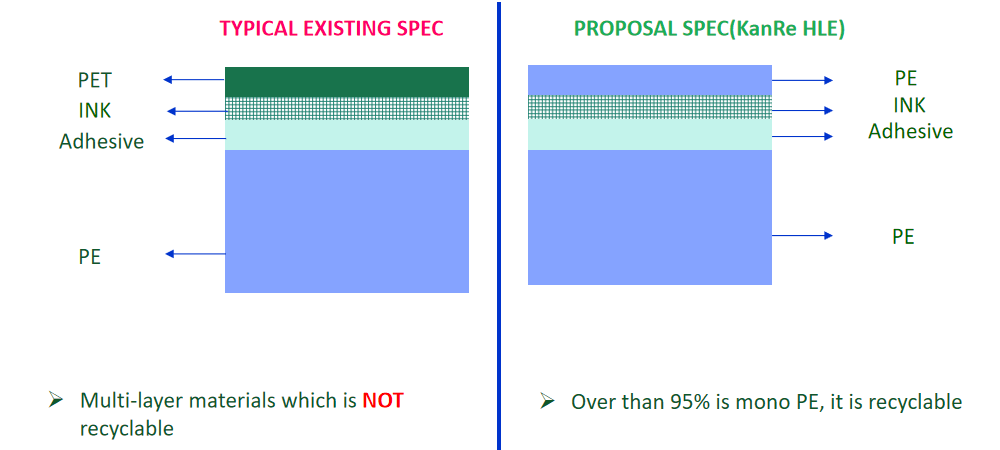
- Typical PET/AL/PE structure VS KanRe HBE
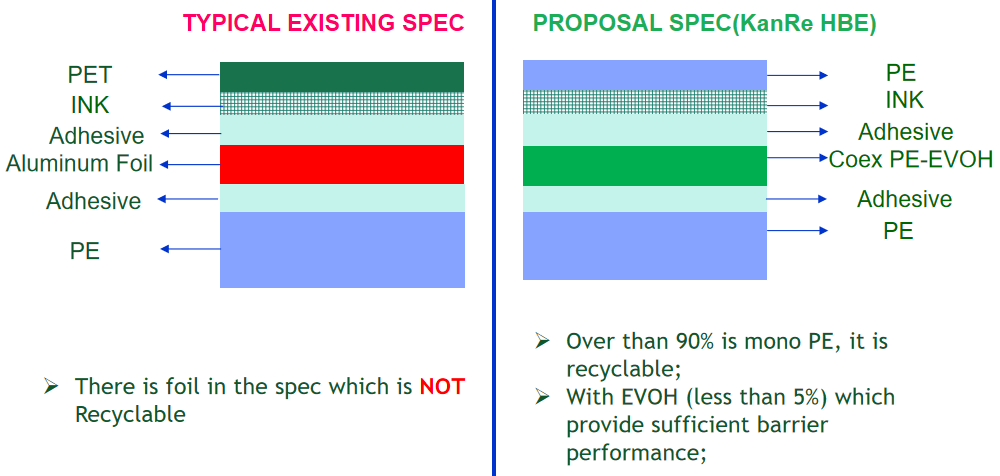
Please contact KDW for more sustainable packaging ideas for plastic pouches.
The future for flexible packaging is bright. Flexible packaging delivers a number of key attributes that benefit members of the entire packaging value chain including brand owners, retailers, and most importantly, consumers.
The efficient and responsible use of resources has become a critical consideration for companies throughout the packaging value chain.
Start With KDW
+86 13559233681(Wechat, Whatsapp)
No1, Anbian Rd, Torch High-Tech Zone (XiangAn), Xiamen, Fujian, China

